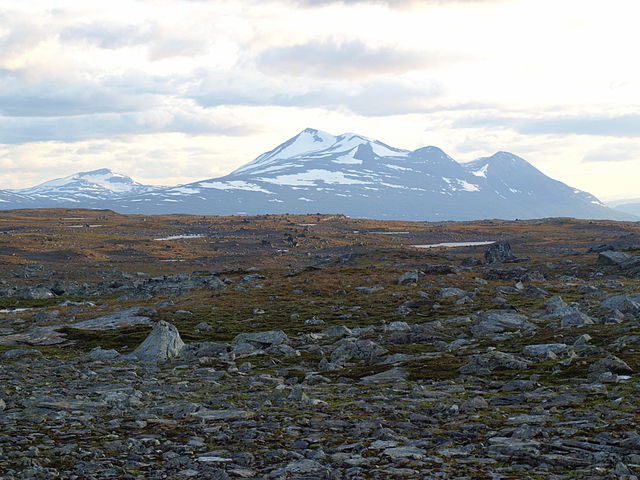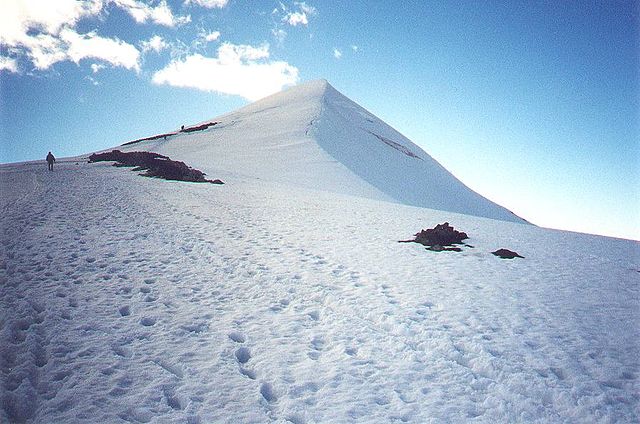The Scandinavian Mountains or the Scandes is a mountain range that runs through the Scandinavian Peninsula. The western sides of the mountains drop precipitously into the North Sea and Norwegian Sea, forming the fjords of Norway, whereas to the northeast they gradually curve towards Finland. To the north they form the border between Norway and Sweden, reaching 2,000 metres (6,600 ft) high at the Arctic Circle. The mountain range just touches northwesternmost Finland but are scarcely more than hills at their northernmost extension at the North Cape.
Mount Áhkká in Stora Sjöfallet National Park, northern Sweden
Formation of the mountains of southern Norway (the Southern Scandes).
Galdhøpiggen seen from west, Norway's highest mountain
Glittertind
A mountain range or hill range is a series of mountains or hills arranged in a line and connected by high ground. A mountain system or mountain belt is a group of mountain ranges with similarity in form, structure, and alignment that have arisen from the same cause, usually an orogeny. Mountain ranges are formed by a variety of geological processes, but most of the significant ones on Earth are the result of plate tectonics. Mountain ranges are also found on many planetary mass objects in the Solar System and are likely a feature of most terrestrial planets.
The Namcha Barwa Himal, east part of the Himalayas as seen from space by Apollo 9
The Andes, the longest mountain range on the surface of the Earth, have a dramatic impact on the climate of South America
Montes Apenninus on the Moon was formed by an impact event.







